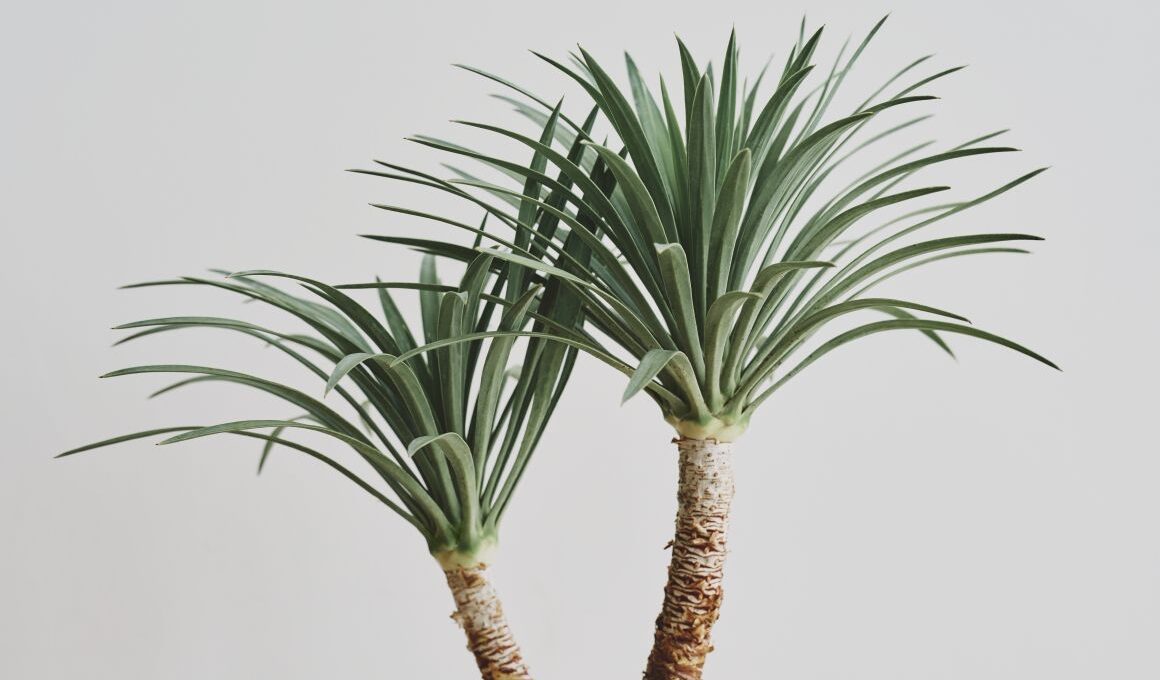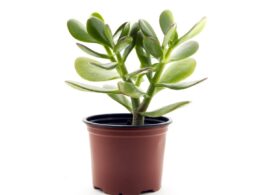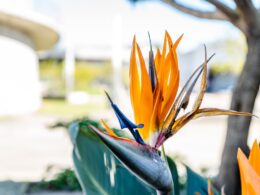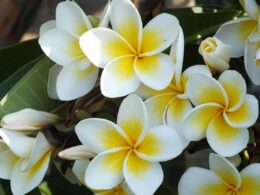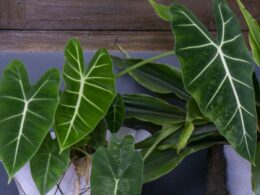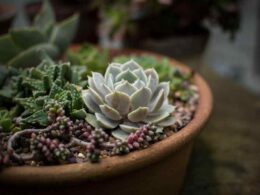We’ll talk about how to water yuccas, what type of soil they prefer, and how to deal with common problems. So if you’re thinking of adding a yucca plant to your home décor, keep reading!
What is a Yucca Plant?
Yucca plants are a type of desert plant that is known for its sharp, spiky leaves. The yucca plant’s spiky leaves help protect it from animals that might try to eat it. The yucca plant is also known for its beautiful white flowers. These flowers bloom in the spring and summer. Proper yucca plant care dictates full sun and well-drained soil to grow well. Yucca plants are low-maintenance plants that are easy to care for. Yucca plants are a popular choice for landscaping in dry, desert areas. Yucca Elephantipes (spineless yucca) is the most common yucca species, and the easiest to cultivate, too.
Yucca Cane Plant Care
Yucca cane is a popular indoor plant, known for its ability to tolerate low light conditions. However, yucca does best when it receives bright, indirect light. If you are thinking of adding a yucca to your home, make sure to choose a spot that receives plenty of sunlight. Yuccas can also tolerate brief periods of direct sunlight, but too much sun can cause the leaves to scorch. When choosing a pot for your yucca, make sure it has good drainage. Yuccas are susceptible to root rot, so it’s important to keep the roots dry. Water your yucca only when the soil is dry to the touch. With proper care, your yucca will thrive and provide a dramatic accent to your home décor.
Water Requirements for a Yucca Cane
Houseplants are a great way to add some life to your home, but they can also be a bit of a mystery. Watering is one of the most important aspects of plant care, but it can be difficult to know how much to give. Overwatering can lead to root rot and fungal growth, while underwatering can cause leaves to drop and flowers to wilt. So, how much water does a yucca cane houseplant need? As a general rule, these plants prefer to be on the drier side. Water when the top inch of soil is dry, and allow the water to drain freely. If you’re unsure whether your plant needs water, stick your finger in the soil, if it feels dry several inches downs, it’s time to water. In the winter months, you can reduce watering to once every other week.
Soil Requirements Indoors
Yuccas are native to desert regions, so they prefer sandy, well-drained soil. If you’re using potting soil from your local nursery, make sure it is light and airy. You can also add some sand or perlite to improve drainage. It’s important not to overwater yuccas, as this can cause the roots to rot. When watering yuccas, allow the water to drain completely before returning the plant to its pot.
Fertilizing Your Yucca Cane Plant
Fertilizing is an important part of yucca plant care. These plants should be fertilized every two weeks during the growing season (spring and summer). If you’re using a liquid fertilizer, dilute it to half strength before applying. During the fall and winter months, yuccas should be fertilized once a month. It’s important not to over-fertilize yuccas, as this can cause the leaves to yellow. Be sure to follow the directions on your fertilizer label for best results.
Common Concerns with Yucca Plants
One of the most common problems with yucca plants is root rot. This can be caused by overwatering or by sitting the plant in water. If you think your yucca has root rot, check the roots for signs of decay. If they are mushy or blackened, you will need to remove them. Another common problem with yuccas is browning leaves. This can be caused by too much sun, too little water, or a nutrient deficiency. If you see browning leaves on your yucca, try adjusting its care routine and see if that helps.
Pests
Pests are also a common problem when it comes to yucca plant care. Mealybugs, spider mites, and scale can all infest yuccas. These pests can cause the leaves to turn yellow and eventually drop off. If you see pests on your yucca, treatment will vary depending on the type of pest. Mealybugs can be controlled with an insecticidal soap, while spider mites may require a more potent pesticide. Scale can be difficult to control, so it’s best to consult with a professional if you see this pest on your yucca.
Propagating a Yucca Plant
Propagating yucca cane plants is easy and can be done with just a few simple steps. First, remove the offsets (small yucca plants that grow at the base of the parent plant) with a sharp knife or shears. Cut as close to the parent plant as possible, being careful not to damage the roots. Next, pot the offsets in a soil mix made of 50% potting soil and 50% sand. Be sure to water them well and keep them in a sunny location until they become established. After a few weeks, you can then move them to their permanent home. Yucca cane plants can be propagated by division or by seed, but division is generally the easiest method.
Yucca Houseplant Pruning & Cleaning
Yucca plants need to be kept clean in order to avoid the build-up of dust and other debris. To clean your yucca, use a damp cloth to wipe down the leaves and stems. You may also need to prune off any dead or dying leaves. Pruning should be done sparingly, as yuccas can take a long time to recover from any pruning damage. If you are unsure how to prune your yucca plant, consult an expert or local nursery.
With proper yucca plant care, these canes can make a great addition to your home. They are easy to care for and can tolerate a wide range of conditions. By following the tips above, you can keep your yucca healthy and happy for years to come. Thanks for reading!





